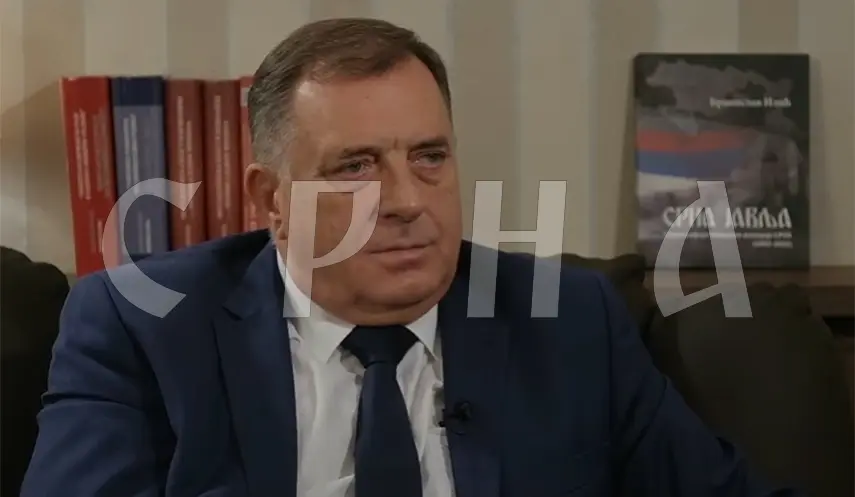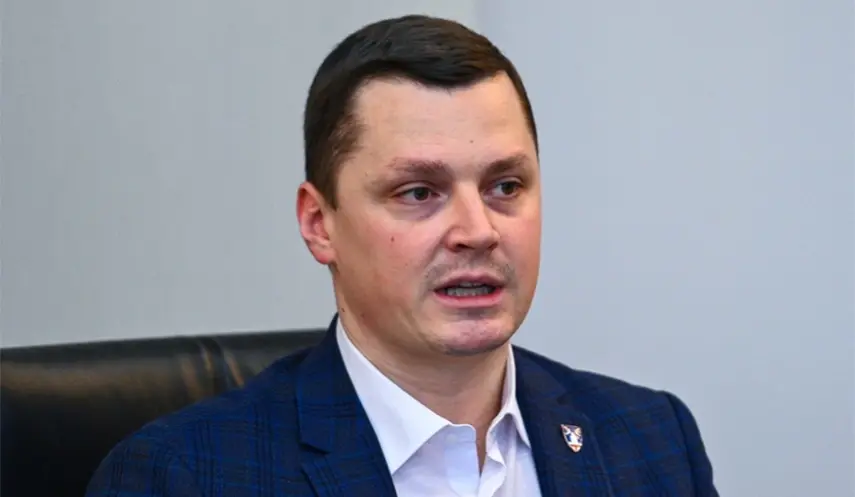USTASHA CRIME IN DRAKULIĆ - BLOODY LESSON FOR HISTORY
NDH - crimes against Serbs /1/
06/21/2025
09:47

BANJA LUKA, JUNE 21 /SRNA/ - The Banja Luka settlements of Drakulić, Šargovac and Motike - are the places where Ante Pavelić's Ustashas committed the most massive and horrific massacre of the Serbian population in World War II on February 7, 1942. According to historical data, the bloody incident began in the Rakovac mine, where at least 52 Serb miners were killed.
In Motike, Serbs and Croats lived together until World War II. Of the total population, about 60 percent were Serbs and 40 percent Croats. There were almost no other peoples or religions. Serbs and Croats in Motike helped each other until World War II.
At the beginning of the war, in April 1941, there was a sudden awakening of nationalism among Croats, who became aggressive towards Serbs at every step, without reason.
Members of the Independent State of Croatia /NDH/ moved around the village, individually and in groups, in uniforms and in civilian clothes, every day. They began to hold all the power in the village. Since April 1941, the Serbs had been practically enslaved and completely subjugated. They lived in seclusion and silence, passively awaiting their fate. The Croats forced them to repair village roads, and in winter to clear snow - which would soon turn bloody.
MURDER OF SERBS WITH "BLESSING" OF FRIAR TOMISLAV FILIPOVIĆ
The core of the Banja Luka Ustasha organization was made up of brothers Viktor and Blaž Gutić. The Franciscan monastery in Petrićevac and the headquarters in Banja Luka became an Ustasha hive of activity.
Realizing that something terrible was brewing, the Serbs from these villages began to meet secretly and discuss how to protect their villages and families from the Ustasha, who were increasingly taking people away, and all traces of them were lost. However, the Ustasha found out about these secret meetings. Everyone who tried to protect their families was killed. Terror, torture and abuse were increasingly pronounced. And so on for months.
And then the bloody 7th of February 1942 dawned. At dawn, the Ustashas surrounded Drakulić, Šargovac and Motike. According to the testimonies of survivors, recorded in the book "Friars i Ustashas Slaughter" by author Lazar Lukajić, the massacre began at four in the morning in the Rakovac mine, where, during the shift, workers were greeted and immediately near the mine, killed on the spot with blows to the back of the head or with sabers.
The author of the book wrote that his uncle Nikola Macanović also worked in the mine. Macanović rarely missed work until that day. And on that February 7, 1942, early in the morning, he went to work, as usual, to the first shift. However, the snow had fallen heavily the previous day and during the night, and the road had not yet been made, so Nikola, although a strong and healthy man, was unable to make his way through the snow and drifts to the mine. He returned home and - stayed alive. He died in 1991 in his native village of Čokori.
His neighbor Branko Dragojević, born in 1905, who worked the third shift, managed to get to the mine the previous day. He arrived in time and - he was killed.
From Čokori, on that day, Dušan Dragojević /born 1905/, Lazar Vučić /1910/, Sretenije Vučić /1900/ and some other miners were also killed. Not a single Serbian miner from Rakovac managed to get survive that day. They were all killed, under the leadership and with the blessing of the Catholic Friar Tomislav Filipović.
TESTIMONY ABOUT THE CRIME AGAINST THE MINERS IN THE RAKOVAC MINE: RADE SAVANOVIĆ - HERO AMONG THE TIED
During the Ustasha massacres, among the miners of the Rakovac brown coal mine near Banja Luka was Rade Savanović, a miner. The then-miner Dragutin Kostanjšek and the clerk Ante Josipović testified about the crime against the miners, and Lukajić included their testimonies, preserved in the court records, in his book.
According to Josipović's testimony, it was warm in the pit that day, so the first shift miners, including Rade, stripped down to the waist. The supervisor shouted that all "Greek-Easterners" had to go to the roll call. Rade asked if he could activate the mines first, but he was told to come out immediately because, as they stated, "they were waiting for questioning upstairs."
At the exit from the pit, the miners passed through the Ustasha lines. At the roll call they were greeted by Lieutenant Mislov and Friar Tomislav Filipović - the infamous Fra Satan, already known as an Ustasha captain. Filipović was a Catholic priest from the nearby Petrićevac monastery and his presence initially calmed the miners, who thought it was a case of forced conversion to Catholicism.
A roll call followed. Each called miner was led outside, where the Ustashas tied their hands with wire behind their backs and grouped them in groups of five or six. Tied up like that, they were led to nearby Bare - the site of today’s monument.
Through the snow, the tied miners were led by the Ustashas. They walked silently, without saying a word, even though the wires cut deeper into their skin. At their destination, the Ustashas formed formations, and Friar Filipović, in an Ustasha uniform, appeared before the miners and said:
"Kill them, and I will absolve you of your sins!"
The first miner was hit in the back of the head with a crowbar, and then finished off with a bayonet. When the second fell, Rade Savanović's voice was heard from the column:
"Don't kill anyone anymore! No one is guilty. Here I am. I was carrying explosives."
Savanović, although not guilty, tried to take responsibility and save the other miners, including his relatives. He calmly stood before Friar, asking to be killed instead of the others.
Filipović laughed mockingly at him:
"Your guarantee is weak for so many Greek-Easterners. Get him out of here!"
The Ustashas singled him out, still tied up, and Friar approached with a knife. Rade said to his face:
"You are killing the poor. They will judge you."
Filipović then slaughtered him. The Ustashas finished him off with blows and pickaxes. After that, all the remaining miners of the first shift were killed. Their belongings were left in the pit. On the same day, the miners of the second and third shifts were also executed.
A complete list of the murdered miners was never made. There were few living Serb witnesses left, and the Croats kept the secret. It is known that 52 or 53 miners were killed that day, but the names of all of them were never established. It turned out that the killing in the mine was only the beginning of the massacre. /to be continued/

DODIK: MOVE TOWARD GOAL WITHOUT HESITATION – SRPSKA MUST RESOLVE ITS STATUS

DODIK: ELECTIONS WILL BE BOYCOTTED, THIS IS NOT REBELLION BUT POLITICAL RESPONSE

DODIK: I WILL REQUEST MOSCOW’S SUPPORT FOR SRPSKA INDEPENDENCE REFERENDUM



